Marrakech offers plenty of places to visit, including museums and monuments. So while visiting Marrakech, don’t forget to immerse yourself in the history and culture of Morocco by visiting my hand-picked museums.
BAHIA PALACE

The entrance fee is 70 MAD
Open from 9 am till 5 pm
The Bahia Palace (meaning “brilliance” in Arabic) is a nineteenth-century palace, one of the masterpieces of Moroccan architecture. The palace features 150 rooms, including the famous secret harem.
Morocco’s best artisans for almost 14 years were decorating the Bahia Palace. All rooms in the Bahia Palace are empty. After Vizir’s death, his wives and the Sulton moved the furniture to their palaces.
Coming to Morocco? Book your consultation
Book your 45-minute 1:1 video consultation call, and I will answer all your questions about Morocco, review your itinerary or create one together.
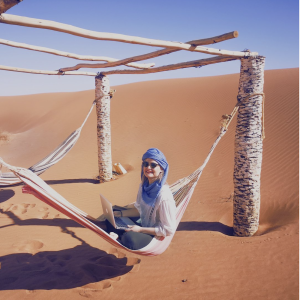

The Bahia palace is built for the personal use of Si Moussa, Grand Vizier of Sultan Morocco. Si Moussa’s son Ahmed ben Moussa enlarged and enhanced the palace’s beauty with new gardens and stunning decor. He lived there with four wives and 24 concubines, with their children, and his favourite wife, Bahia.
Spread over almost eight hectares, the Bahia palace comprises about 150 richly decorated pieces of moucharabiehs, projecting oriel windows enclosed with carved wood latticework. Also, marble, carvings and paintings on beech and cedarwood, stucco, and zellige, the first stained glass windows of the Maghreb, housed in Heterogeneous buildings, with no established order, organized around many verdant and refreshing green courtyards.




In 1912, General Lyautey, the governor of French protectorate Morocco, moved in and added creature comforts such as fireplaces and central heating. Today, it is managed by the Moroccan Ministry of Culture. Bahia Palace is a top-rated tourist attraction in Marrakech.
When Morocco gained independence from France in 1956, the Bahia palace was used as a royal residence until King Hassan II transferred it to the custody of the Moroccan Ministry of Culture, so the building could serve as a cultural icon and tourist attraction.
EL BADI PALACE
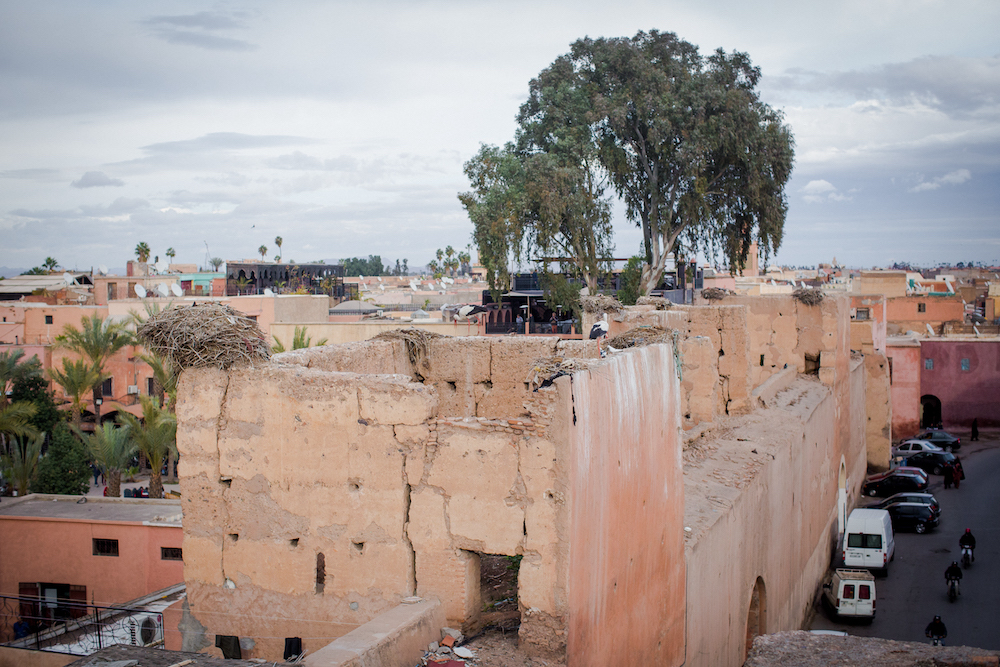

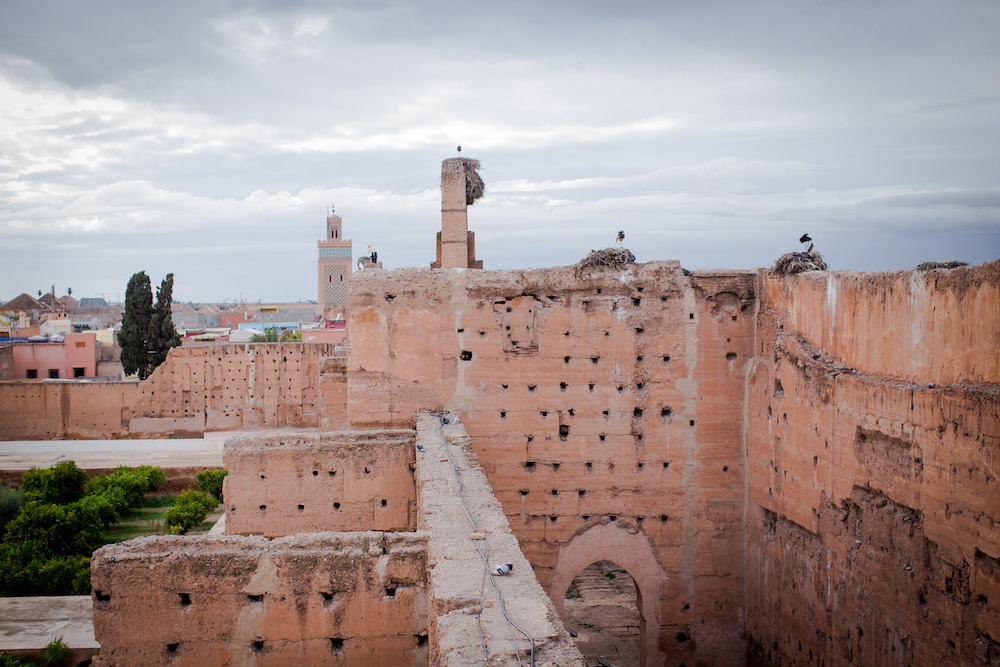

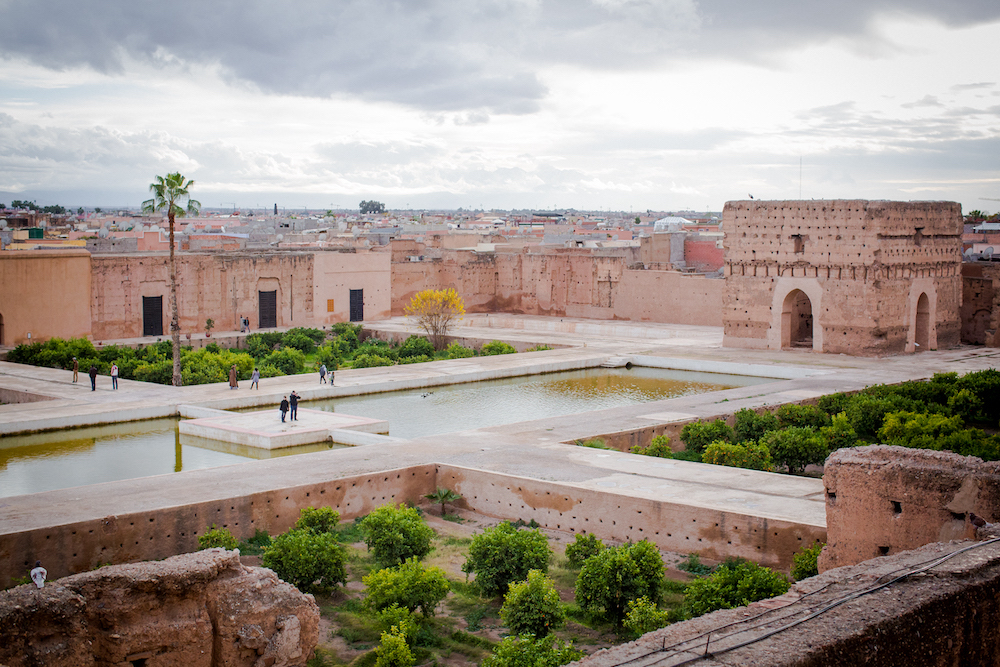

The entrance fee is 70 MAD
Open from 9 am till 5 pm
El Badi Palace is an architectural ensemble built at the end of the sixteenth century. The Saadian sultan Ahmed al-Mansur Dhahbi built the palace to commemorate the victory of the Battle of the Three Kings against the Portuguese. Considered a jewel of Islamic art, its construction was influenced by the Alhambra of Granada (Spain).
Sadly, today, it’s a ruined palace with an enormous courtyard size that will give you an idea of the building’s splendour. Only from historians and the old documents can we recover the image of how the palace looked like before.
In 1696, the Alawite sultan Moulay Ismaïl took what was the richest in this palace to build the imperial city of Meknes. El Badii means “The Incomparable”. Historians say the palace had 360 rooms decorated in gold, turquoise and crystal.
It’s a ruined palace, not much to see inside. However, I love climbing the walls to have one of the best views of Marrakech Medina. El Badi palace also hosts cultural events. Moreover, its walls are home to dozen of storks.
SAADIAN TOMBS
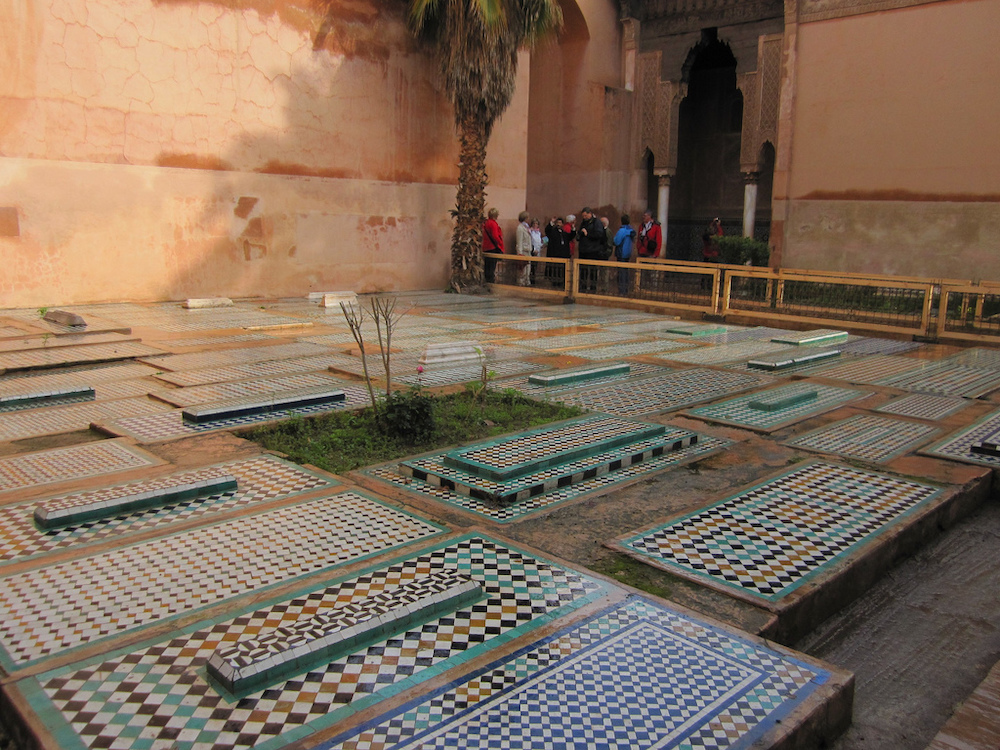

Entrance fee 70 MAD
Open from 9 am till 5 pm
Located next to the Kasbah mosque Moulay al-Yazid, the Saadian tombs are one of the only remains of the Saadian dynasty that reigned Marrakech between 1524 to 1659. In total, 66 princes and other prominent figures lie in the Saadian Tombs and more than 100 chancellors and wives.
The history of the Saadian tombs is dramatic. In the early 18th century, Sultan Moulay Ismail (the same who almost destroyed El Badi palace) decided to remove all traces of the Saadian dynasty. However, he dared not commit the sacrilege of destroying their burials and ordered them to hide the entrance. The entrance to the Saadian tombs was only to be rediscovered in 1917. Since then, the tombs have been open to the public.
Ben Youssef Madrasa
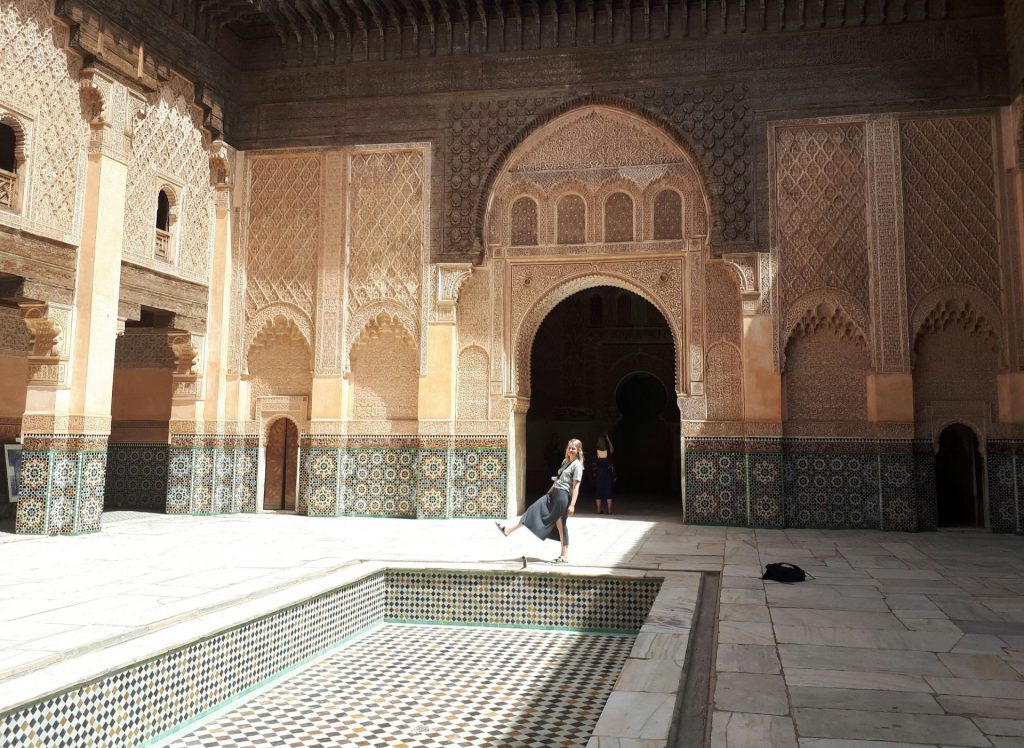

One of the most visited and Instagrammed places in Marrakech, Madrasa Ben Youssef was founded in the 14th century by the Moroccan monarch Abu el Hassan. The Madrasa was the largest Islamic college in Morocco during its height.
Up to 900 students would have lived there to study law and theology. The monarchy supported them. Madrasa Ben Youssef was transformed into a museum in 1960. The Madrasa was closed for restoration in November 2018 and reopened to the public in April 2022.
DAR SI SAID
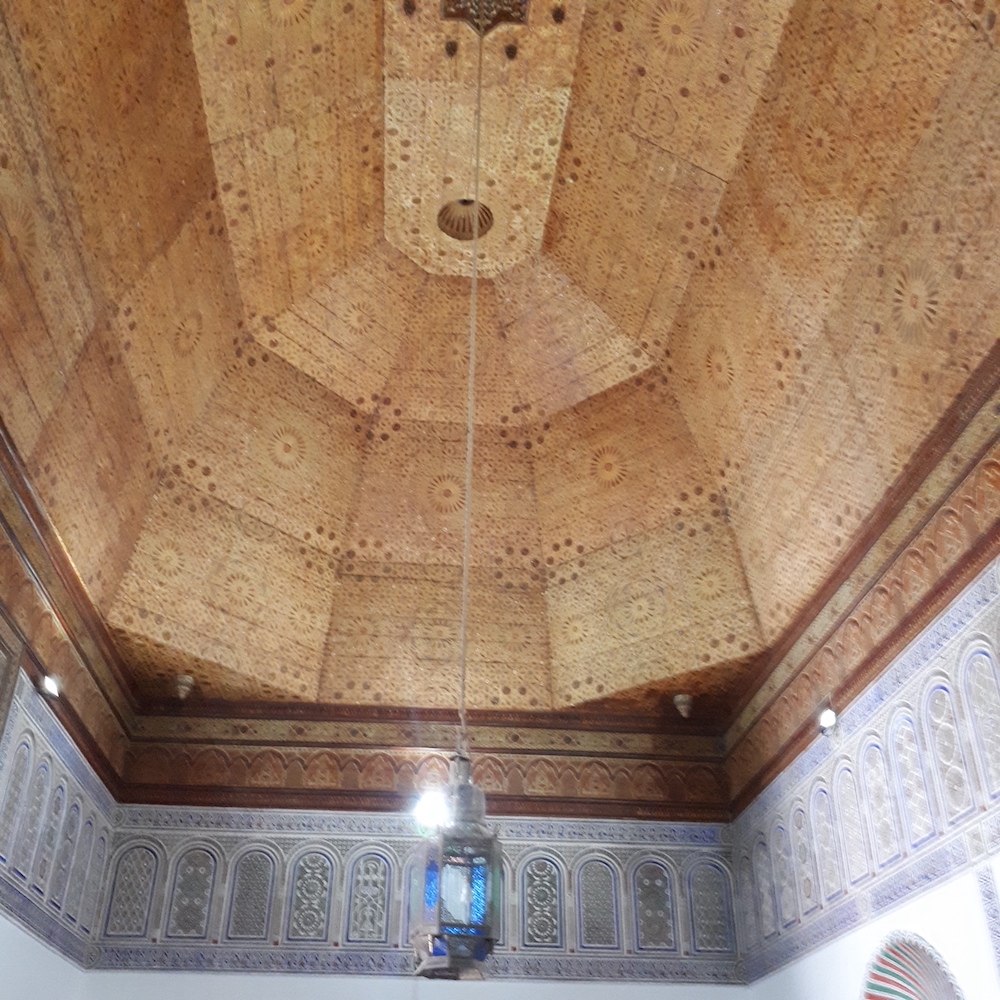

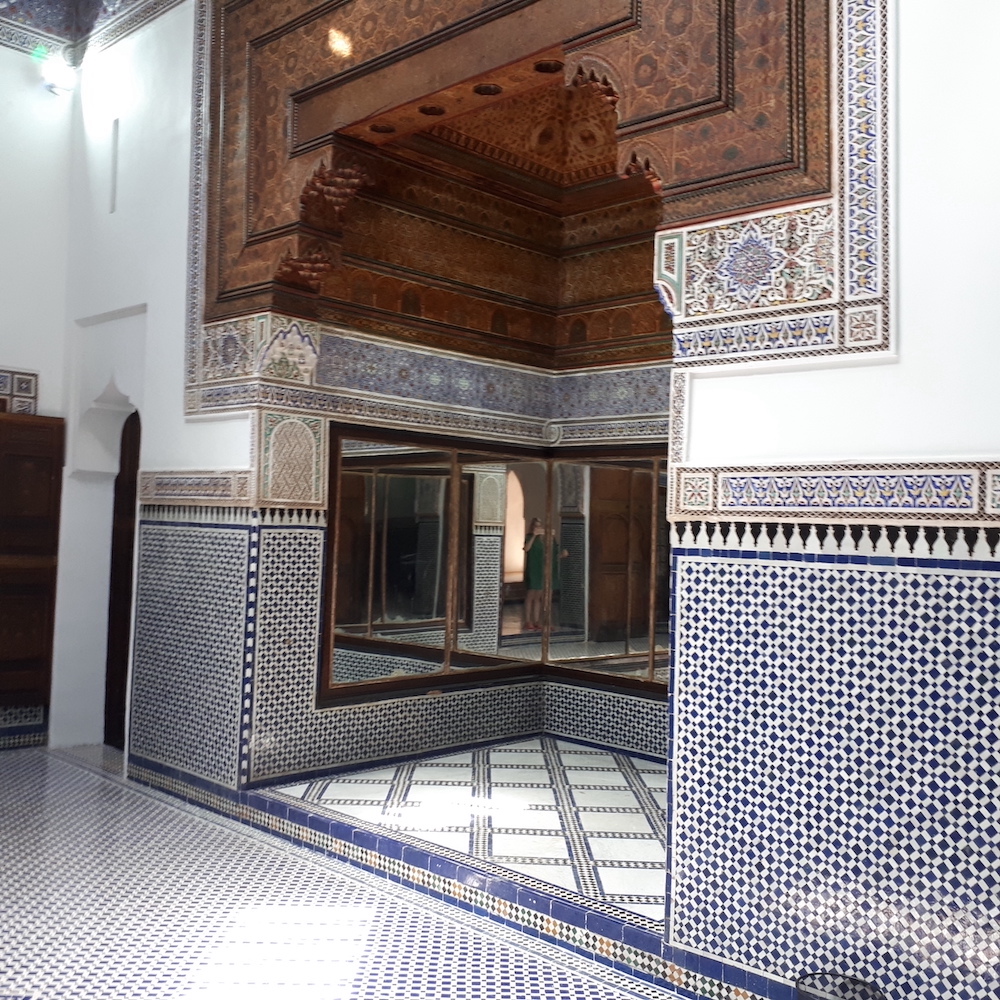

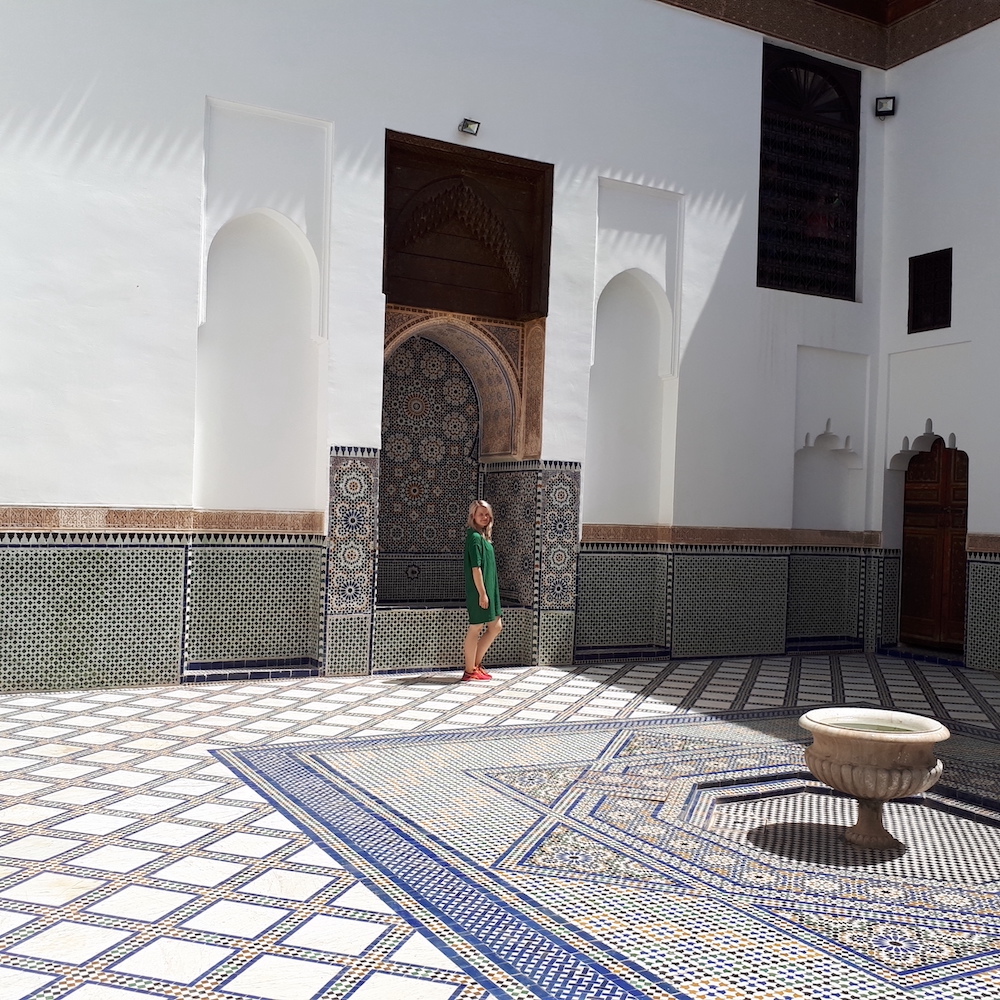

Open every day except Tuesday.
From 10 am to 6 pm
Entrance fee 30 MAD
The Dar Si Said Museum is the oldest museum in Marrakech. The museum is officially called the Museum of Moroccan Arts. Dar Si Said is not as famous as other Marrakech monuments, but worth a visit. I call it a best-hidden secret of Marrakech. I prefer Dar Si Said because it’s not as a tourist as the Bahia Palace. Built during the second half of the 19th century by order of Si Said Ben Moussa (the same who owned the Bahia Palace), then a minister under the regency of his brother Ba hmad.
As of 1930, a museum and crafts workshops were installed. Spread over two floors, this museum exhibits the most significant number of Marrakech objects: woodwork, jewellery, pottery, ceramics, weapons, carpets, weavings, pretty kettles on legs, trays, old musical instruments, etc.
The Museum of Marrakech
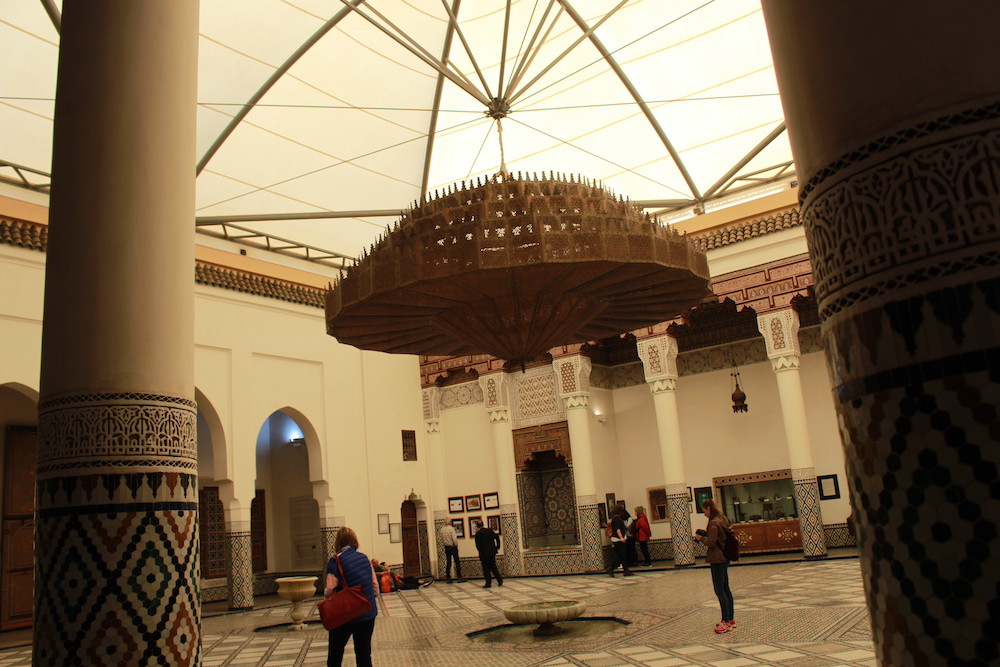

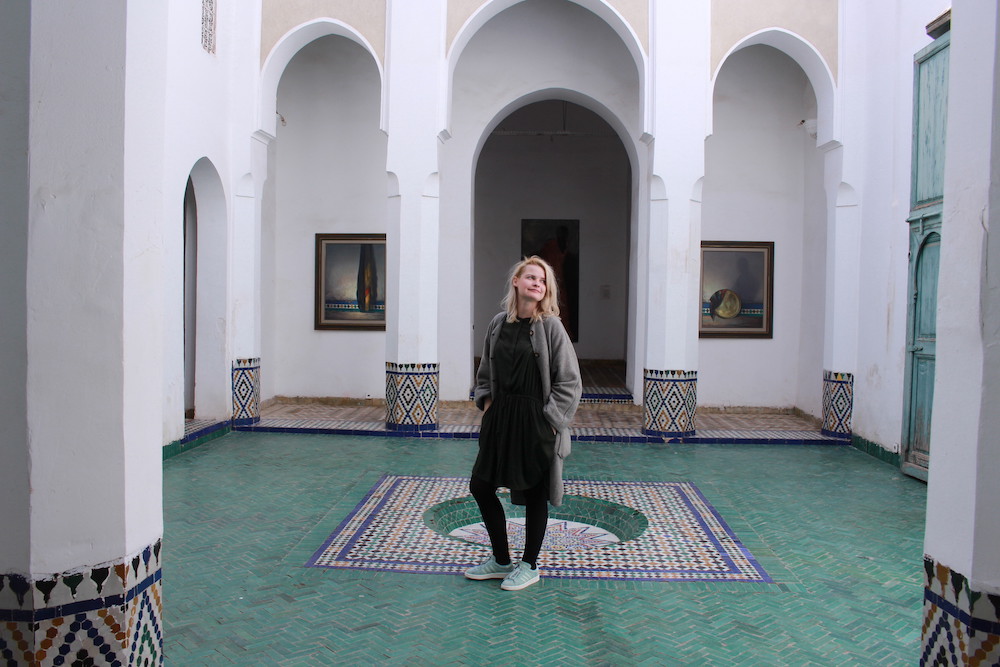



Open from 9 am to 6.30 pm
Entrance fee 50 MAD
You will find the Museum of Marrakech (Musée de Marrakech) close to the Madrasa Ben Youssef. Marrakech museum is housed in the Dar Menebhi Palace, constructed at the end of the 19th century by Mehdi Menebhi. In 1956, the palace was taken by the government of Morocco. The sponsors of the museum are the Omar Benjelloun foundation. There are several rooms to visit, but some are empty. My favourite place in the museum is a marvellous central courtyard with a huge chandelier dominating the space.
DAR BELLARJ
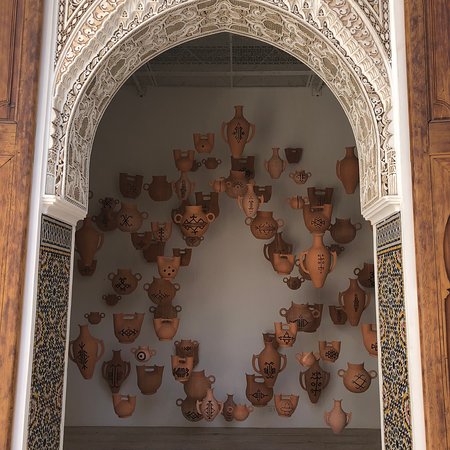

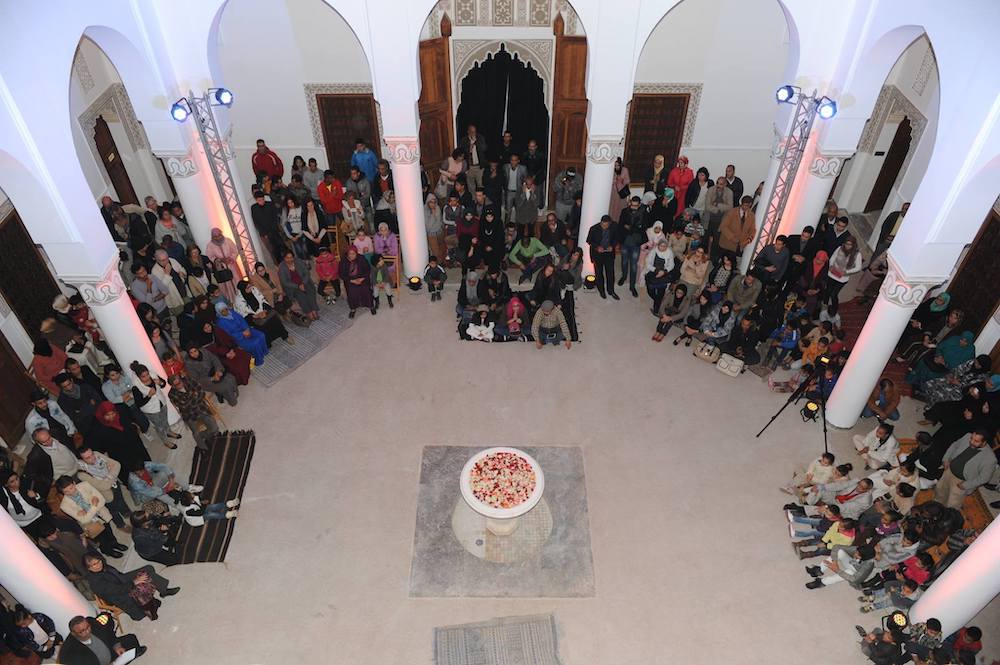

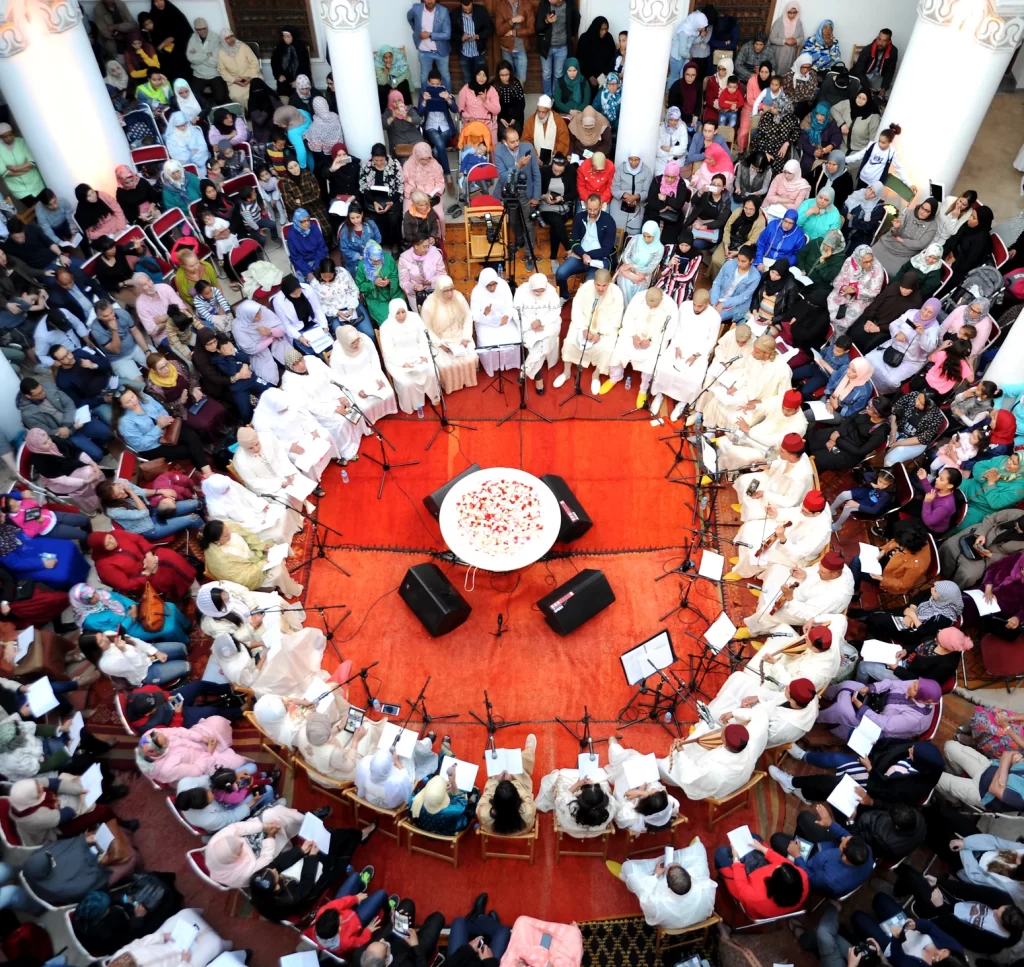

Open from 10 am to 6 pm
Free entry
Dar Bellarj Foundation Marrakech is located right next to the Madrasa Ben Youssef. It used to be the sanctuary of the injured storks (“bellarj” means stork in Arabic).
Dar Bellarj Foundation aims to promote the living culture in Medina. The gallery organizes concerts, performances, workshops, exhibitions, etc. More about their events you can read on their official website. Dar Bellarj is a hidden gem if you like contemporary and modern art mixed with Moroccan traditions. The exhibitions are professional and well maintained in a large, beautiful patio surrounded by four spacious lounges.
MAISON DE LA PHOTOGRAPHIE
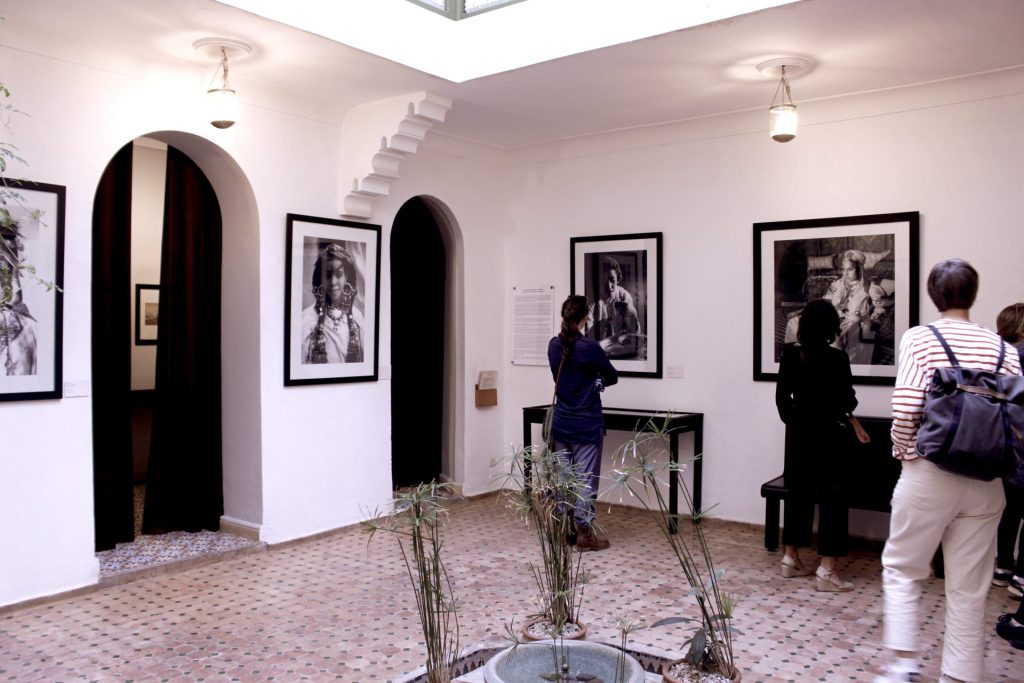

Open from 9.30 am until 7 pm
Entrance fee – 50 MAD
The Photography Museum has opened its doors in the heart of Marrakech since May 2009. A private collection of 8000 photographs was gathered; this collection is only about Morocco and covers 1870 to 1950. The exposition contains hundreds of old photographs and shows the first film recorded in the High-Atlas in colour, in 1957 by Daniel Chicault Landscapes and Faces of the High-Atlas. There is a little cafe on the roof with one of the best rooftop views of Marrakech.
DAR EL BACHA Confluences Museum


Open from 10 am to 6 pm
Entrance fee 60 MAD
Dar El Bacha Palace was built in the late 19th century for the most famous Moroccan Pasha (duke) Thami el Glaoui.
He became the Pasha of Marrakech in 1912 and ruled the city until 1956. At the time, one of the wealthiest men in the world. He can also be referred to as the Great Gatsby of Morocco. In Dar El Bacha Thami El Glaoui threw lavish parties to celebrate his love for western culture and Europeans, including famous guests such as Winston Churchill, Roosevelt, Jacques Majorelle or Charley Chaplin. The palace was renovated and converted into a museum known as the Dar El Bacha – Musée des Confluences in 2017. This year, the museum opened a Bacha Coffee House, a beautiful place for coffee and breakfast.














